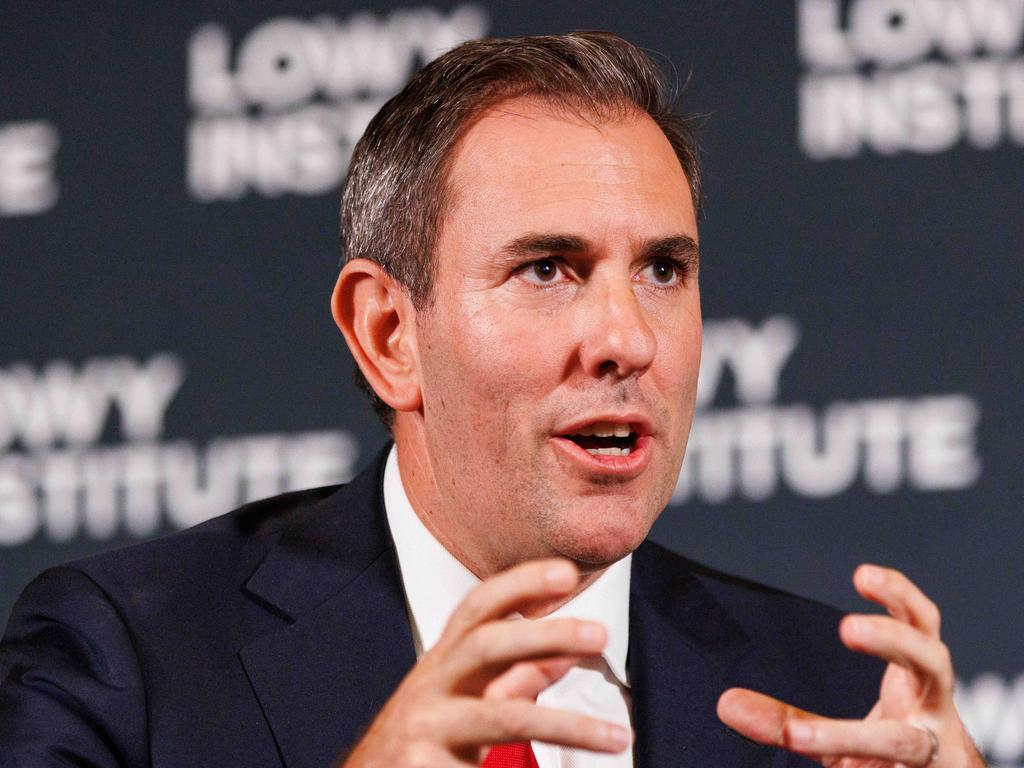This is a budget of mixed messages from the Albanese government

They do so with a budget burdened by the weight of mixed messages, grand ambition, handouts, high-risk forecasts and its undeniably expansionary effect.
One clear political objective is now driving the government. It desperately needs to break the hold of pessimism now gripping households.
Chalmers’ solution, however, is brazen in both its assumptions and purpose. Everyone gets a prize but the consequences are unknown.
Having set a benchmark for inflation returning to target by Christmas Chalmers seeks to wedge the RBA on rates.
“We are taking responsibility for our part,” he says.
This can be interpreted only one way. It expects the central bank to act if Treasury is right and lower rates before an election. The RBA is being set up for blame when it doesn’t. And it is unlikely to, based on this budget.
If anything, Chalmers has just made the central bank’s job harder.
Chalmers has also dramatically shifted the narrative. An inflation problem that was only yesterday “higher and longer than expected” will now be “lower, sooner”.
This is an invitation to cynicism from an already deeply sceptical electorate.
And trying to subsidise his way to success could easily turn to disaster.
The government is trapped between two versions of gloom. A baked in decline in living standards now being felt acutely by households and deep uncertainty about the true state of the economy.
If Treasury is in any way wrong, Labor will be in danger of going to the election having failed to win the inflation battle, combined with the effects of a softening economy.
It is clear that Labor is now operating in a calculus of fear. A fear of rates going up before the next election is due, and or another tough Christmas for families heading into the election year, adding to the cumulative political risk.
Chalmers third budget appears to have been crafted with a potential early election in mind, to avoid both, whereas it was previously thought that an early election would only be called once rates come down.
But a lot of things still have to go right from now until whenever that is for any hope of a broader electoral dividend.
And for things to go right for the Treasurer, that means things have to remain bad, or even get worse, for the rest of us.
Chalmers has embraced a strategy with significant political and economic risk.
It was only in January that Labor argued that stage 3 tax cuts were too generous for high income earners. Yet they are now entitled to government handouts.
At the same time structural reform of the budget is absent, with deeper deficits now forecast beyond this year – $14 billion higher than projected just six months ago.
Chalmers’ claim to restraint is also dubious. Spending under this government as a percentage of GDP is higher than the last time Labor was in power.
Chalmers rejects the notion that his budgets are expansionary. But how could they be viewed otherwise?
At the same time he risks being seen to have abandoned structural reform in favour of short term political reward.
His greatest gamble, however, is inflation.
Economists are likely to argue that while almost $8 billion in subsidies may bring down the headline numbers – as they point to individual items like energy and housing in the CPI – they could easily work the other way with the subsidies eventually finding their way back into the economy, which is what you are trying to avoid.
And this is not the same thing as fighting inflation when the RBA are more focused on underlying inflation.
‘The direct effect of subsidies reduce measured inflation but because they pump money into the economy, the indirect effects add more to inflation that the indirect effects reduce it,” says economist Chris Richardson.
Albanese this week told his caucus that Chalmers would deliver a true Labor budget. And he has.
Labor governments, with the exception of Hawke, find it difficult to deal with inflation when the remedies required to get on top of it mean smaller government, less spending and a freer Labor market.
Chalmers has opted for the only solution available to him politically.
It may well work in the short term, which gives more weight to suspicions of an early election.
But of all the scenarios possible, Chalmers has chosen the most optimistic.
He is punting that Treasury is right on inflation and the economy while banking on buckets of cash to win over voters in the near term.
Challenging Chalmers’ notion of a new “economic orthodoxy” is the age of economic uncertainty.
Uncertainty is the subtext to the entire budget. There is a fuzziness about inflation and ambiguity about growth.
The key question for Chalmers and Albanese is whether people buy any of it.
If this budget was the first clear opportunity for the government to more clearly define the political battleground for the election contest, the contrast between Labor and the Coalition after this week has just become stark.






Anthony Albanese and Jim Chalmers are leading Labor to the next and potentially early election on a wing and a prayer.